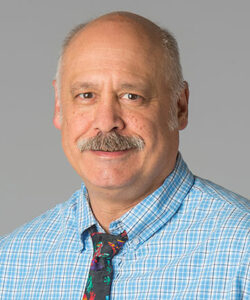
Home » Water maker AWG International taps foreign markets
Water maker AWG International taps foreign markets
AWG receives export assistance via state grants, SBA initiative

September 13, 2012
AWG International Inc., a Spokane company that makes machines that draw water out of the air, has a promising future in international trade thanks in part to assistance from a U.S. Small Business Administration-backed export program, says Jeff T. Stockdale, the company's president and chief operating officer.
The company also is developing the next generation of its technology, which it expects will boost its contract manufacturing jobs here "by an order of magnitude," Stockdale says.
AWG makes air-to-water generators that condense drinking water from humidity in the air. The devices, which also filter and sterilize the water they produce, are ideal for use in areas where drinking water is scarce, he says.
AWG's products range in size from 70-pound residential units that produce five gallons of water a day, to outdoor commercial units that generate up to 400 gallons a day.
AWG units are equipped with proprietary filter cartridges that kill waterborne bacteria on contact without adding chemicals to the water, Stockdale says
"They produce very clean water, and you know exactly where it's coming from," he says of the air-to-water generators. "They're not adding anything in the water-generation process."
AWG employs five people. Three of them are based at the company's headquarters here, at 7721 E. Trent, and the other two, including Keith White, the company's CEO, are based in Vancouver, British Columbia.
One AWG model, a small commercial unit that's powered by waste oil, is made by a Spokane-area contract manufacturer he declines to identify, and likely supports more than a dozen jobs.
The next generation of residential units, which AWG is developing, could bring more than 10 times as many jobs to the Spokane area, Stockdale says.
"Our manufacturing partner has the capability of scaling to meet our production needs," he says. "New job creation is certainly our intent."
The company's current generation of residential units is manufactured in Korea, and its largest commercial units are manufactured in Michigan, Stockdale says.
Residential units cost about $1,500 each, and the largest commercial units cost more than $100,000, he says.
The air-to-water technology is most cost effective when relative humidity is 40 percent or above, Stockdale says. Ideal installation sites are in coastal locations or near a water body of some type, he says.
Spokane's average annual relative humidity, for example, is 78 percent in the morning and 52 percent in the afternoon, according to the National Climactic Data Center.
AWG's goal is to challenge desalination technology, which extracts fresh drinking water from seawater, Stockdale says.
"It's already cost competitive without the negatives of a waste product," he claims.
However, the technology will require some scaling up to approach production capacity of large desalination plants, he says.
White has been working on the air-to-water technology in Western Washington and British Columbia since 1997. AWG moved its headquarters here from the West Side last year, when the company merged with MIP Solutions, a Spokane company that specialized in industrial water-filtering technology.
"A lot of cottage industry here is complementary to AWG's product development," Stockdale says. One complementary development was the waste-oil-burning technology used to power some of the commercial units manufactured here, he says.
"It burns waste oil extremely clean, and it meets EPA standards," he says of that technology.
Stockdale says he expects to see significant growth in demand for the waste-oil-fueled models in foreign markets.
"Many countries don't have oil-reclamation programs," he says. "This provides an incentive to collect and use waste oil in a constructive way."
Last year, AWG tallied more than $1 million in international sales, after turning to the Washington State Small Business Development Center export program to help the company tap foreign markets.
Three AWG employees came to an export workshop conducted by the SBDC in Spokane and asked for assistance, says Vern Jenkins, one of four international trade specialists working in the SBDC's export program in Washington state.
Two of them—Jenkins and Keith Meadowcroft—are based in Spokane. The others are based on the west side of the state.
Jenkins, AWG's main contact in the program, says he helped AWG understand export regulations and prioritize foreign markets. He also helped AWG evaluate distributors.
"Consulting with Vern was invaluable," Stockdale says. "He researched specific markets and helped with basic compliance."
Meadowcroft says SBDC is impressed by AWG's technology.
"Water, as a natural resource, is identified as one of the key trigger points for conflict in the future," he says. "What AWG is doing today, I believe will have effects over people around the world, and AWG could become a marquee company for the state of Washington."
Calvin Goings, SBA's Seattle-based regional administrator, says SBA has helped more than 5,500 U.S. companies expand international exports or enter foreign markets for the first time through its national export initiative.
SBA-backed export centers, such as the one here in the Small Business Development Center at 1235 N. Post, "offer a treasure trove of information, and the vast majority of services are free," Goings says.
Washington state also awarded two SBA export grants to AWG to help the company pursue international markets. AWG received a $2,500 grant to send representatives to India, and another $2,000 grant to present its products at the San Diego World Trade Center.
Within a few months of first contacting Jenkins, AWG established export clients in India, Peru, the United Arab Emirates, the Philippines, Morocco, and Portugal.
"The reception to the products has been incredible," Stockdale says. "People are excited about the promise of the technology."
The company is just emerging with a viable product line and hasn't recorded a profit yet, he says, adding, "We hope to attain positive cash-flow status in the reasonable near future."
One of AWG's major expenses is its patent portfolio.
"We're focusing on protecting the technology through the U.S. patent process and the international patent process," he says. "We're using the export program to help us navigate that."
Latest News
Related Articles



_web.webp?t=1764835652)
